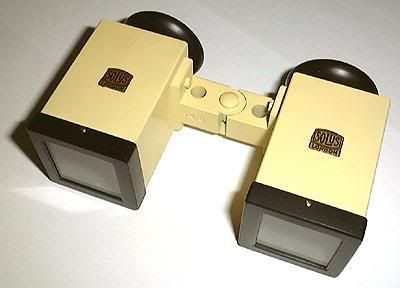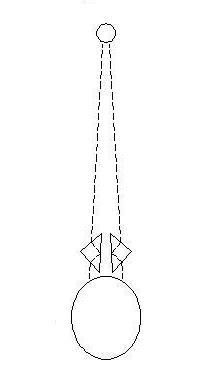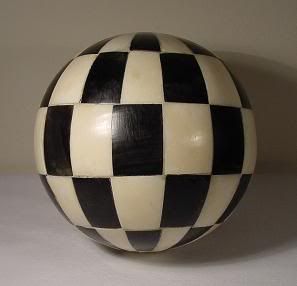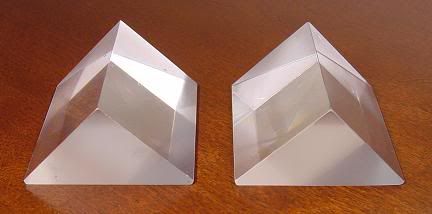
A pseudoscope is an optical instrument made with two prisms. As seen in the drawing, the mirrors reverse the image in each eye causing some items viewed through it to look quite unusual: convex objects become concave, things pointing towards you may look like they are pointing away and vice versa.

This site isn't about actually constructing a pseudoscope, but how to replicate some of the effects by holding two prisms up to your eyes.
Below are some quotes from section 23 of Wheatstone's paper, written in 1852, describing his observations when using a pseudoscope. Some of my comments are interspersed:
A small terrestrial globe appears as a concave hemisphere; on turning it round on its axis, it was curious to see different portions of the spherical map appear and disappear in a manner that nothing in external nature can imitate.
I have a checkered ball that I spun and then looked at through the prisms, when it almost stopped but was still spinning, instead of appearing to spin counter clockwise as it actually was, it switched to looking concave with the spin now being clockwise. For me this illusion is fleeting, jumping back and forth a couple of times between normal and concave, the actual illusion lasting just a second or less before it changes back. This ball also appears concave while standing still, but it must be well lit otherwise the shadows cause the illusion not to work.

Two objects at different distances, being simultaneously regarded, the most remote will appear the nearest and the nearest the most remote.
This works for some items under certain conditions, when the objects are not far apart and when viewed from an angle.
You should be able to see the illusions mentioned above with a couple of five dollar prisms from the local hobby store, but glass prisms will work much better. Some of the plastic ones are not very clear, the illusions won't be seen if one of the eyes receives a blurry image, so I recommend closely scrutinizing the optics for best results.
These appearances are not always immediately perceived; and some much more readily present themselves than others.
This is definitely true, for some of these experiments you may have to try different lighting or re-arrange the objects to get them to work. Also some of the illusions do not appear instantly, but after a few seconds you may begin to see them. Some of these effects are subtle, so I would caution not to over-expect, although several of the ones that I've seen have worked great.
Update 05-June-2005:
Be sure to use right angle prisms, the equilateral type are not suitable for a pseudoscope.

Two more illusions that worked:
- the inside of a small cup looked convex, with the rounded bottom appearing to protrude about half way up the height of the cup
- a number of pencils sticking out of a jar at various angles was viewed from eye level, some of the ones pointing forward appeared to point away, and some of the ones pointing to the rear seemed to point upwards or slightly forward
Infinity mirrors and a few other mirror photos
